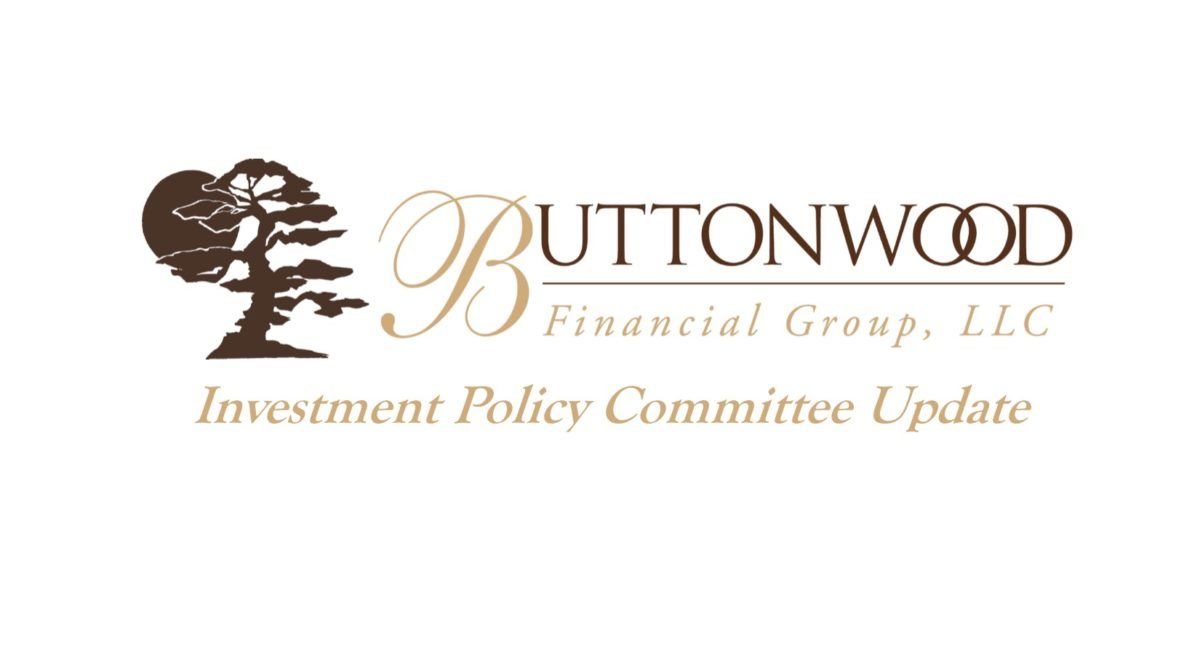Buttonwood Investment Policy Committee Update – November 2021
Accelerating vaccinations bolster the economic restart
More than 18 months after the initial shutdown, Covid remains the most important driver of markets today. Despite the emergence of Delta and other new strains, we believe the big picture macro backdrop remains positive and supportive of risk-taking, particularly in equities.
As we first discussed over a year ago, in May 2020 , we believe the continuation of the economic recovery is due in part to vaccinations, coupled with strong fundamentals in the US. This is leading to higher trends in the economic data. In the US, more than 670,000 vaccine doses have been administered per day in October. The vaccination drive has translated to about 56% of American adults being fully vaccinated, with a healthy amount of dispersion across the states. There is now increased focus on the potential need for booster shots, and the FDA is approving the ability to mix and match vaccines.
Although cases remain high at an average of more than 85,000 infections a day in mid-October, they are down by more than 8,000 from the weeks before, according to data from Johns Hopkins University. Similarly, death rates are decreasing, and we see significantly lower rates of mortality for vaccinated vs. unvaccinated. Combined, we see this data as evidence of progress in the fight against Covid and a positive development for markets.
Improvement in labor market yet to come
Another important factor to watch is the U.S. labor market. There is more progress needed on this front – both on total payrolls and the labor force participation rate – but we could see significant improvements that will drive equity markets higher.
The unemployment rate now sits ~4.8%, but if we add back those who left the labor force because of Covid, that number would sit closer to 6.5% Continuing jobless claims have plunged by 7MM (or 90%) as the federal pandemic emergency program expired. This is a huge number. We will be looking to see if this brings people back to the labor force, which could significantly lift employment readings in coming months and take some pressure off wage increases.
Despite about 7 million people still out of work due to Covid, nearly all employment measures indicate the labor market is exceptionally tight. There are 2.7 million excess job openings. Job openings having doubled since lows of mid-2020 and are near record highs. People who are employed are quitting at record rates and the September Jobs Report showed wages are growing at the 2nd fastest pace in 15 years.
There is clearly robust demand for labor, leaving supply as the obvious culprit as workers are slow to come back due to excess savings buffers, unemployment benefits, childcare tax credits, dependent care needs, health concerns, etc.
Inflation – Running Hot: “Transitory” or here to stay?
There is little doubt that inflation has been heating up and is now being felt everywhere from the gas pump to local restaurants. We’re positioning our portfolios to serve as a defense against inflation and treat it not only as a risk but also an opportunity; especially in equities, energy and commodities.
In 2021, the monthly change in rent prices has been creeping closer to the +3% level across both cities and less densely populated suburbs. In addition to rising housing/rents expense, most of the other inflationary impulses we’ve observed are generally ‘fix’ themselves in the short or medium term; like energy costs (turn on the spigot and prices decline), wage inflation (pay more and people come to work) and higher than usual consumer savings.
On the flip side, the factors typically contributing to deflation are more long-term in nature; like an aging US population or increasing use of technology as a factor in production. Our base case is that over the medium term, headline inflation will come in above the Fed’s target because of the global supply shocks. In response, we believe the Fed will stay the course and letting inflation (and the economy) run hot. This is the strategy they unveiled in August 2020 as “average inflation targeting.”
That said, if you look at the dot plots, markets appear skeptical of the Fed’s resolve to keep rates pinned near zero. The market is already pricing in one rate hike in 2022 and starting to price in a second, with 3 hikes priced in for 2023. What we are worried about is inflation expectations becoming unhinged from reality. There is a risk that both investors and policymakers extrapolate more from the current supply shocks than they should, resulting in a sharp rise in inflation expectations and a potential policy error.
A case in point for inflation is energy prices. In our March ’21 rebalance, we added direct exposure to US energy stocks, based on our expectation of economic recovery triggering increased demand amid several global supply shocks. Since then, we’ve seen both Oil (WTI Crude) and US Energy stocks soaring. Oil is up over 70% YTD and broad US energy stocks are up over 50% YTD – a nearly 18% “discount”, which in our view, is unjustified.
Based on several data points, we continue to believe energy will continue to serve as an inflation hedging asset and outperform. From a demand standpoint, we are seeing an acceleration in pent-up travel desires. According to the Wall St Journal Holiday bookings through September are up 35% vs. 2019. We also see energy demand picking up as temperatures start to fall in the Northern Hemisphere. Colder weather has already started to take hold in China, triggering fears of whether they will be able to meet domestic heating needs.
On the supply side, OPEC+ confirmed it would stick to its current output policy earlier in October, despite pressure from other countries to increase production. The market tightness is expected to extend into most of 2022 and it’s forecasted that crude oil demand will only catch up with crude supply by the fourth quarter of next year.
Thinking about positioning, our view of foreign markets continues to overweight Developed Markets (DM) over Emerging Market (EM) equities as we come into the end of year. In contrast to the continued progress coming out of the pandemic in the US and EU, sluggish earnings expectations for EM equities keep us cautious on the region. Exposure to EM is highly concentrated from a country perspective to China (about 1/3 of the EM stock index) and highly concentrated from a sector perspective in technology, two exposures which give us reason for pause as we weigh their prospects for growth relative to other risk / opportunity exposures across the portfolios.
With respect to China, growth has slowed sharply this year as fiscal and credit supports have been removed and restrictions imposed on housing and coal production. This growth slowdown has now hit levels policymakers can no longer ignore, with Q4 growth likely dropping to 3% from Q1’s 18%. In China, the interaction between growth and social policy objectives is key; a dynamic that will likely continue to ebb and flow in the future as it has in the past. Periods of strong growth are likely to allow for greater regulatory tightening while periods of slowing growth likely leaving less room to pursue social objectives.
Shifting from stocks to bonds, we are also looking for relative value opportunities in the bond market. While return expectations remain muted across most bond markets, investors are struggling to find upside potential in the fixed income portion of their portfolios. One area we believe can deliver attractive returns is in the bonds of former investment grade companies who have recently been downgraded to speculative grade, or “Fallen Angles”.
During the depths of Covid a record amount of investment grade bonds were downgraded to junk, creating a potential universe of so called “rising stars” (junk bonds eligible to be upgraded to investment grade). The current upgrade cycle is on a similar trajectory to past cycles with about 4% of Covid era “rising stars” returning to Investment Grade ratings thus far.
Anecdotally, we have observed rating agencies seem to be more hesitant than in the past to pull the upgrade trigger: Time will tell if this caution is warranted. As such we believe that a sizable amount of downgraded bonds will continue to become upgrade candidates in the months to come following balance sheet revitalizations. Historically, 15% of “Fallen Angels” became “rising stars” within 12 to 36 months after their downgrade. Considering the magnitude of the downgrades last year, we believe this presents an attractive case for potential future upside performance in an otherwise sleepy outlook for bond market returns.
No shortage of risks!
While we have sought out what we believe are attractive opportunities in both the stock and bond markets, we continue to watch for risk in investment portfolios. Near-term uncertainties abound with no shortage of headlines to weigh on investor sentiment.
First, we have a high stakes showdown unfolding on Capitol Hill as Democrats struggle to pass a massive infrastructure spending bill and offset the cost with still murky new tax policy. Second, global growth has slowed since midyear, which many see as evidence of the initial reflation narrative turning into one of stagflation (high inflation paired with high unemployment and stagnant demand).
Much of the concern stems from significant disruptions in global supply chains as producers struggle to ramp up production fast enough to keep pace with resurgent demand. A major supply crunch is unfolding across energy sectors in multiple regions, particularly Europe, a potential harbinger of what a disorderly transition to a green economy may look like.
We are also seeing supply shortages in labor, transportation, finished goods, delivery times, and retailing, to name a few. While we believe this will prove to be something more akin to extended-transitory, these supply chain issues should last well into next year, pushing prices higher still.
Third, surging prices have investors questioning the Fed’s resolve to stick to its new policy stance and keep short-term interest rates pinned near zero as inflation runs hot. To the extent possible, central banks want to avoid leaning against rising inflation given the potential cost to economic activity, especially if they think the supply shocks will wane and inflation expectations remain anchored.
As a result of these near-term risks and more, both stock and bond markets have been choppy for the last couple of months. While we advocate for patience from central bankers and investors alike, we believe it is prudent to gently pull back on risk as investors climb this growing wall of worries and capital markets slowly reconcile the supply and demand imbalances.
In summary, the recent decline of the Delta variant finally ushered in the strong cyclical bounce back we have been expecting for much of the year; and our active returns have benefitted accordingly. Even though we expect this theme to continue, we think it’s prudent to add ballast to our broader reflation positioning, lock in some gains, and position the portfolios for continued choppiness. As such, we have moderated some of our more volatile sector exposures and further underweight EM stocks to fund increased positions in domestic large caps and government bonds (in this case, TIPS), which are both featured prominently in the benchmark.
We will continue to provide ongoing updates on our views and investment positioning. Should you have specific questions about our strategy, please let us know and we will make sure to review details at our next meeting. And while we don’t recommend fixating on short term market fluctuations, if you would like to check specific investment performance across all your accounts, our Buttonwood Portal is available 24/7. Or you can contact us, and we will provide reports specific to your questions and financial life.
Thank you for your continued trust and allowing us to serve as your Family CFO!
The post Buttonwood Investment Policy Committee Update – November 2021 appeared first on Buttonwood Financial Group, LLC.
Recent Buttonwood Articles
Are you ready to explore the benefits of your very own Family CFO?







